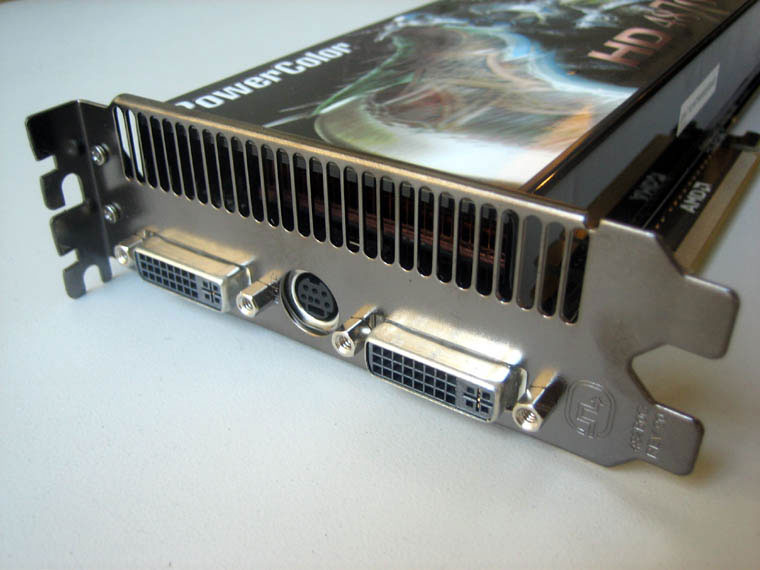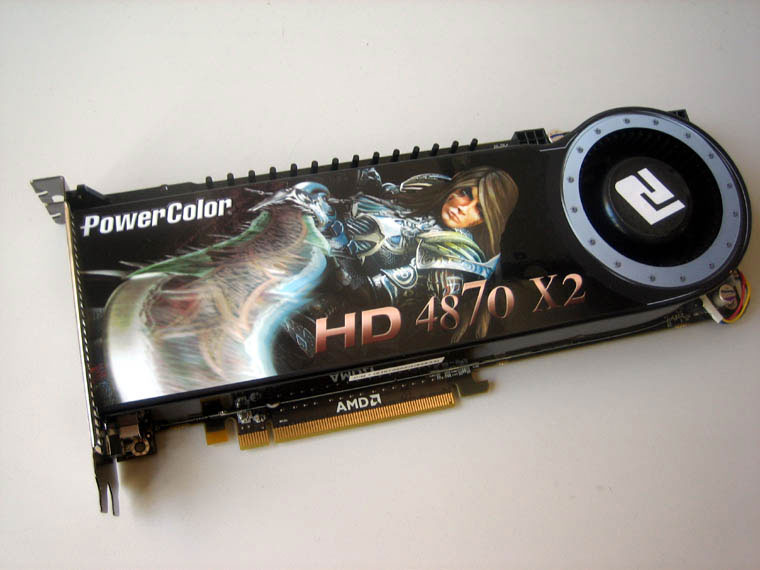ATI Radeon HD 4870 X2 Hands-On
Find out how the ATI Radeon HD 4870 X2 compares to the GeForce GTX 280 in a battle between the two flagship video cards.
AMD announced and started shipping its ATI Radeon HD 4850 and 4870 cards in late June of this year, but the company wasn't shy about revealing its plans to ship a high-end dual-GPU Radeon HD 4870 card as early as August. The graphics companies--all companies, really--are usually pretty good about not announcing new products too early, particularly when those new products are anticipated to outperform the company's current product lineup. Upon learning about upcoming products, customers, being the smart cookies that they are, tend to hold off on purchases and wait for the new models to come out.
AMD wasn't worried about revealing the dual-GPU X2 card early because the single-GPU ATI Radeon HD 4870 offered more performance value than its previous-generation high-end card, the ATI Radeon HD 3870 X2. Nvidia, on the other hand, had just started shipping its high-end GeForce GTX 280, and AMD had no problem letting potential GTX 280 buyers know that the new X2 was on its way.
The ATI Radeon HD 4870 X2, like the ATI Radeon HD 3870 X2, features a single-board, dual-GPU design. The board has two ATI Radeon HD 4870 GPUs and 2GB of GDDR5 memory, or 1GB for each chip. The card has a new PCIe Gen 2 interconnect that offers increased GPU-to-GPU bandwidth and brings back PCI Express 2.0 support.
The X2 should perform about the same or slightly better than a two-card Radeon HD 4870 setup given that the X2 has the same GPUs on board. However, the X2 does have double the GDDR5 memory per chip compared to the single 4870, and you don't have to deal with getting a CrossFire motherboard and a power supply with enough power connectors. The X2 also retails for $549, a little less than what two $299 Radeon HD 4870 cards will cost you.
The X2 card only requires a single x16 PCI Express slot, so you won't need a CrossFire-enabled motherboard unless you want to run two X2 cards together for quad-GPU fun. Each X2 card has an 8-pin (2x4-pin) and 6-pin (2x3-pin) power connector for external power. ATI recommends using a 650W power supply for a single card and 1000W for two cards.

The X2 offers the same Avivo HD video support and video output options as the single-GPU 4870, which includes ATI's hardware-accelerated UVD 2 unified video decoder for high-definition video, accelerated video transcoding, DVD upscaling, and full HDMI output with sound.
We put our Power Color Radeon HD 4780 X2 card up against its closest single-card competition, the GeForce GTX 280. However, we must mention that the X2 retails for $549, about $50 more than the GTX 280's $499 suggested retail price. Of course, we also have to mention that Nvidia originally launched the GeForce GTX 280 at $649 before dropping the price in advance of the X2's launch. In addition to single-card comparison testing, we were also able to test a dual-card Radeon HD 4870 X2 CrossFire setup against a dual-card GeForce GTX 280 SLI system. We filled out the rest of the field with single- and dual-card Radeon HD 4870 setups to show how the X2 compares to its smaller sibling.
System Setup: Intel Core 2 Extreme QX9775, Intel D5400XS, 4GB FB-DIMM (2x2GB), Windows Vista SP1, Windows XP SP3, 750GB Seagate 7200.10 SATA Hard Disk Drive. Graphics Cards: PowerColor Radeon HD 4870 X2 2GB (1GBx2), ATI Radeon HD 4870 X2 2GB (1GBx2), PNY GeForce GTX 280 1GB, Radeon HD 4870 512MB. Graphics Drivers: ATI Catalyst 8.552, Nvidia ForceWare beta 177.79.
The 3DMark Vantage tests confirm that four Radeon HD 4780 GPUs can work together in a Radeon HD 4870 X2 CrossFire configuration. It's shocking to see a five-digit score so soon, when scoring half as much in the Extreme test was considered excellent just a few months ago. Call of Duty 4 scales well when you throw additional 4870 GPUs at it, but the results indicate that the GeForce GTX 280 offers a better cost per frame value. Crysis also remains an Nvidia stronghold. Frame rates didn't budge when we tried adding more Radeon HD 4870 GPUs in our Harbor Assault benchmarking, while doubling up on GTX 280 cards yielded immediate frame rate increases. The Radeon HD 4870 cards beat the GeForce GTX 280 in Team Fortress 2, but frame rates in the CPU-limited game didn't increase as we added more GPUs. A single Radeon HD 4870 card will be enough to give you the GDDR5 benefits in TF2.
The ATI Radeon HD 4870 X2 performs just like a dual-card ATI Radeon HD 4870 CrossFire setup without any of the multicard hassle. Increasing the on-board memory to 1GB per GPU didn't produce frame rate increases in our game tests, but it did help the X2 pull away from the Radeon HD 4870 CrossFire in the forward-looking 3DMark Vantage benchmark. The $549 ATI Radeon HD 4870 X2 put up the best performance numbers we've ever seen in 3DMark Vantage, and it scaled well in Call of Duty 4, but the Radeon's nonexistent dual- and quad-GPU performance gains in Crysis remind us that multi-GPU configurations rely too much on graphics driver updates and game patches to unlock the full potential of the hardware.
Got a news tip or want to contact us directly? Email news@gamespot.com

Join the conversation